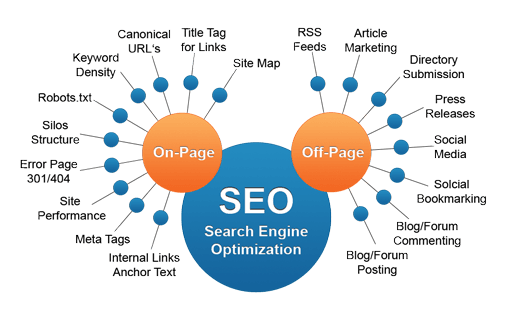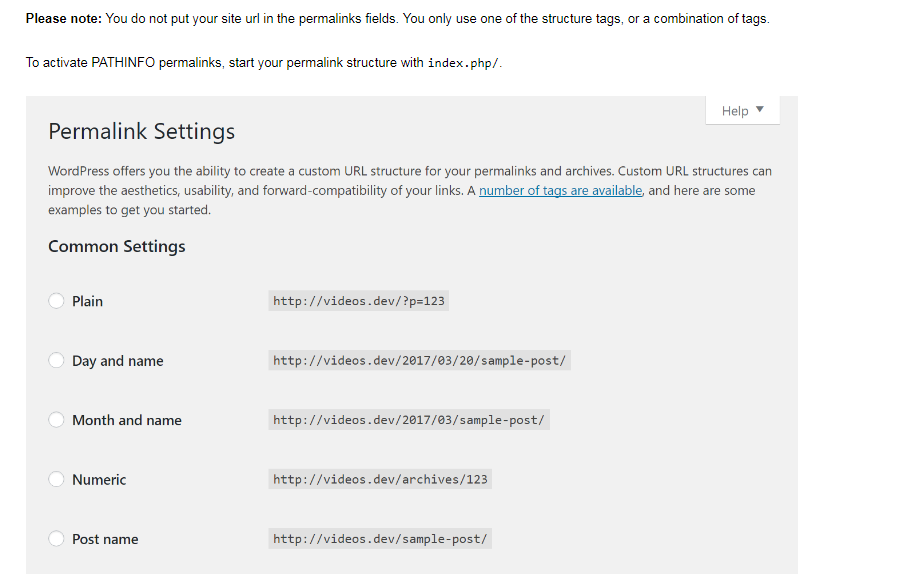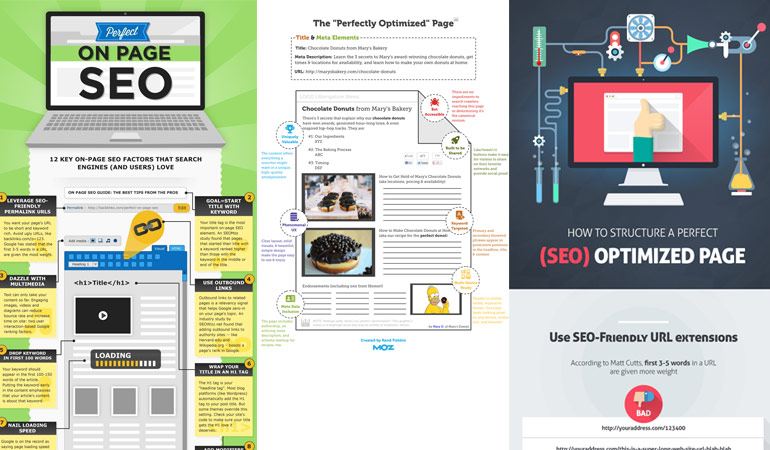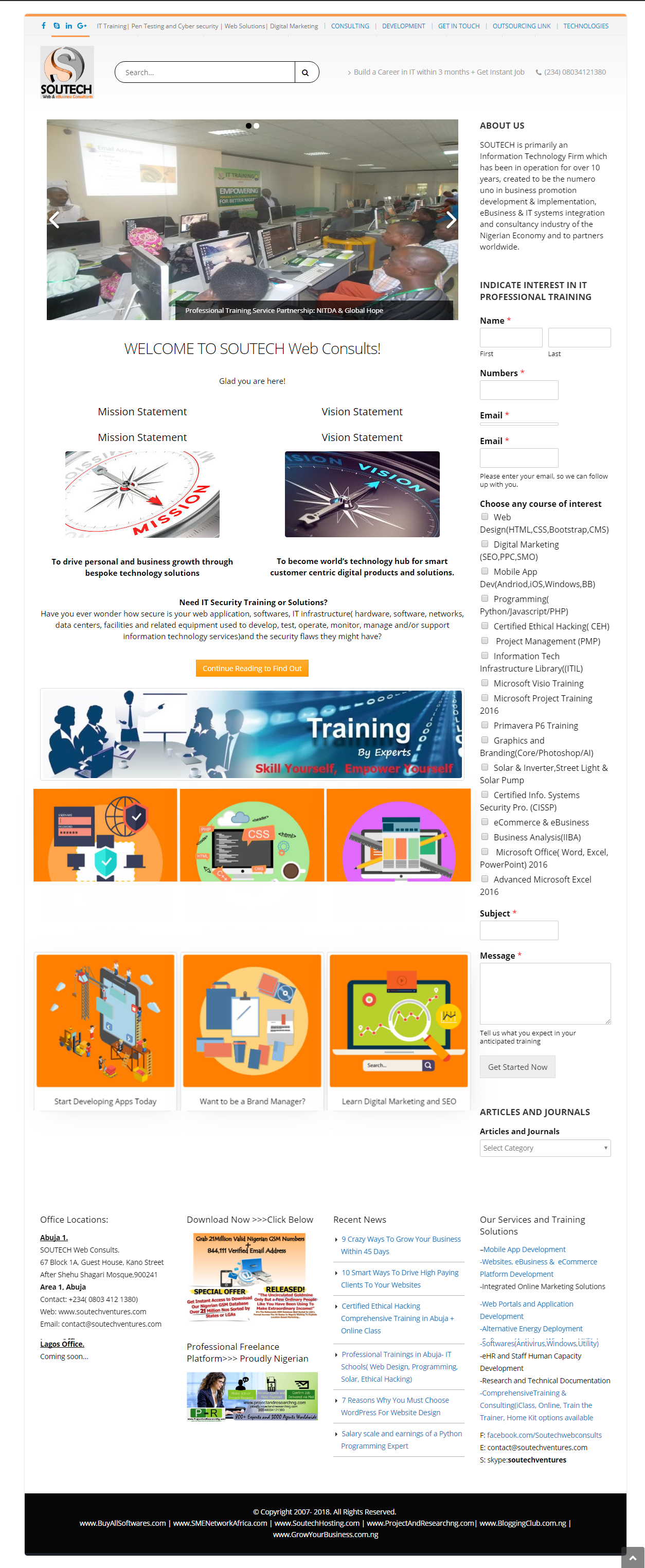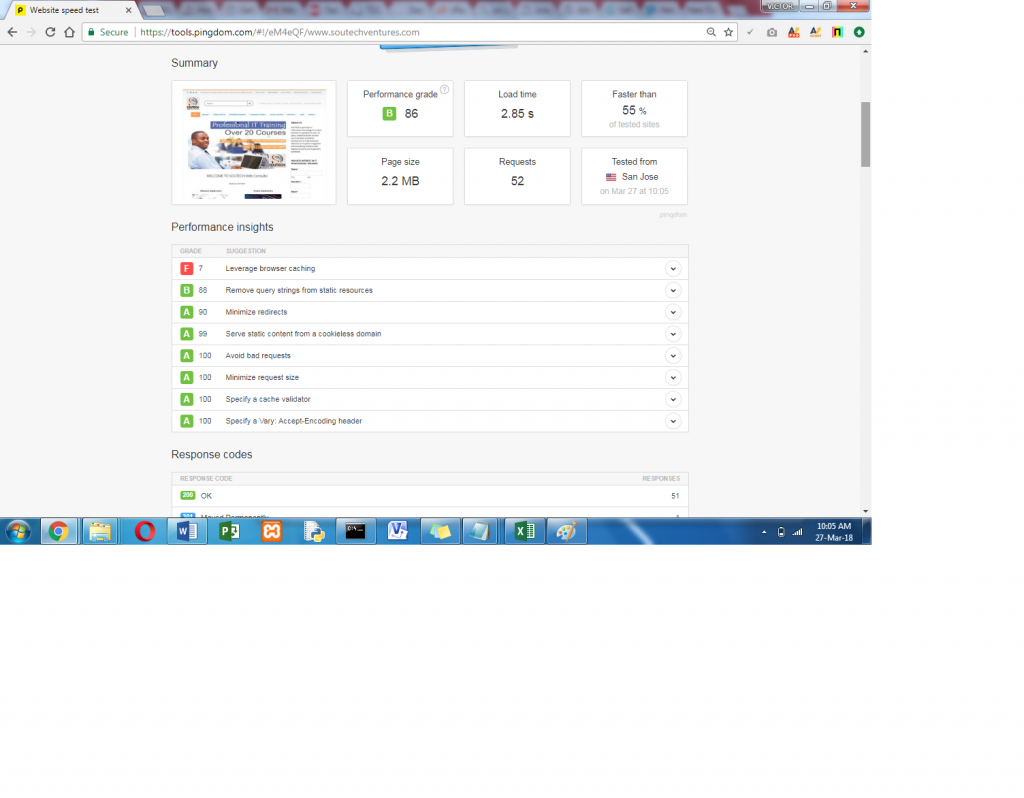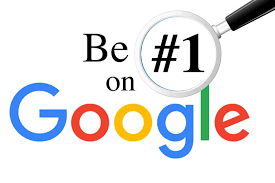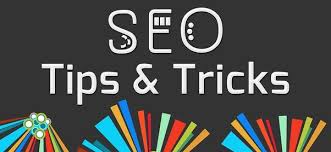- March 21, 2018
- Posted by: SouTech Team
- Category: Others
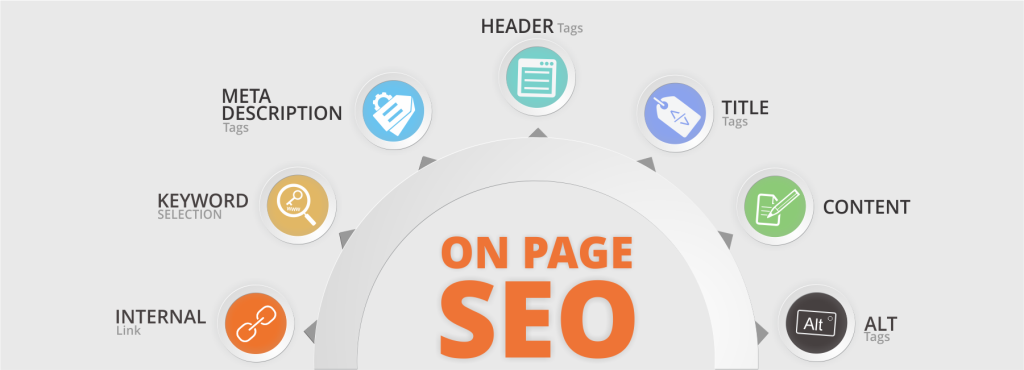
Want to learn “simple strategies on how to rank on google within 90days? On-Page SEO Strategy is constantly changing once in a while and on a continuous basis, that’s why it’s important to stay connected to recent and applicable information to make your website rank well on Google search engine result page(SERP). That is why this guide you are reading is always updated from time to time because Google regularly does massive changes and adjustments to specific criteria for ranking.
If you want to rank on search engines then I have itemized some 22 things you need to make sure you do to take care of your on-page SEO.
Table of Contents – On-Page SEO Guide ( WordPress Case study)
- WordPress Speed Optimization
This guide helps you to achieve optimization using WordPress as a case study. You should be conversant with CMS(WordPress at least) to be able to carry on this tasks. Here are a few things you should be doing in order to speed up your website speed.
- pre-fetching and pre-rendering
- Database optimization
- Caching
- Compression
Good enough WordPress is so powerful because 1 or 2 plugins can take care of the above mentioned points.
- Image Optimization
There are some few points I need to state here with respect to image optimization. Image optimization isn’t just inserting an alt tag, there are over a dozen more factors when it comes to image optimization!
Some persons and you might be one. Get an image from a client or from your archive or even over the internet named “canon26031811” and you upload it to your website- that image title does not describe the image well hence that won’t pay you off. The best thing to do is to rename the image to a more search engine friendly title taking your keywords or the reason you are uploading into consideration
- Image alt and description tags
- Image size: don’t use too much of tiny images that are not clear enough. Use smart and bold images
- Organizing your images: make it easy for readers to read
- Image format: Use png or jpeg but in all make sure they are smart and sharp.
- Google Images: make sure you don’t plagiarize and
- Internal Linking
Want to rank on search engines? There is something you must be done deliberately as a strategy. That’s internal linking, This will not only improve your website visit impression from visitors giving you more reads and conversion but will also help your overall goal of been on Google no 1 position. Some things you should be looking at is
- internal links for navigation: Nice user experience increases website ROI and conversion
- using widgets like “related posts”: This will increase your visitor’s engagements
- finding your most inner-linked pages using Google Search Console
and more!
Internal linking is one very important aspects of on-page SEO because it works
- Server Optimization
Want to become an expert in search engine optimization? Then you must understand the basics of server optimization even if you are using a simple shared hosting server. It’s time to go back to the basics. You need to have a basic understanding and implement the following in a nice way that won’t hamper your SEO:
- server status codes: Make sure different pages are created for this.
- 404’s, 301’s and more: Also make sure you handle this errors gracefully. Some WordPress themes have dedicated pages for this errors which you can tweak to your needs. Really you don’t want a visitor to see a very boring error page rather you want to redirect him to the homepage as we do on this website or you want to take them to an error page but have help on the page like eg. Contact information, search bar.
There are reasons why you have error pages
- Server non-availability
- Missing pages
- Application issues e.t.c
- Hosting and CDN’s: Content delivery network is gaining much grounds like the cloudfare and Amazon services. You need to weigh your options and if needed use them to make sure content/your website is always available to your visitors(with fast loads)
- subdomains and subfolders
- URL Structure and Permalinks
According to WP.
“Permalinks are the permanent URLs to your individual weblog posts, as well as categories and other lists of weblog postings. A permalink is what another weblogger will use to link to your article (or section), or how you might send a link to your story in an e-mail message. The URL to each post should be permanent, and never change — hence permalink.” https://codex.wordpress.org/Using_Permalinks
Post name has proven to be one of the best options because it gives the search engines no more work to do since it knows from the URL the content of the website page or post.
Some of the things you should take care of are:
- relative vs absolute URL’s
- URL’s in the SERPs
- wording/keywords in URLs
- breadcrumbs
- redirects
- Meta Description Optimization
Just updated! As of this past December Google made a major change to the SERPs and how they display their own descriptions. At the core of any SEO campaign are meta descriptions. In this section, we’ll teach you what they are, how to write them, how to measure them and so much more. In 2018 meta descriptions have grown in importance now more than ever. While they aren’t officially a ranking factor, they play a huge part in SEO with the fact that Google has been known to use them within the search engine results page.
- meta description length
- meta description best practices
- are meta descriptions a ranking signal?
- examples of meta descriptions
- Title Tag Optimization
Like meta descriptions, title tags are a core part of any SEO campaign. In addition to teaching you how to write them and optimize for SEO, we’ll show you some real-world examples as well. Title tags are not only an important part of on-page search engine optimization, but they are also an extremely important part of user experience as well.
- title tag lengths
- examples of title tags
- bulk title tag analysis
- title tag optimization
- Headings / H Tags
Learn more about how headings or “h tags” play a role in on-page SEO and how to properly implement them without going overboard. More than any other style of text, the H tag stands out the most, learn to use them to your advantage.
- H tags relevance in SEO
- H tag optimization
- h1 through h6
- Structured Data and Schema Markup
Quite possibly one of the hottest topics right now in SEO is structured data and schema markup. Since the onset of Google’s Knowledge Graph SEO’s around the globe has been in a frenzy marking up their websites with semantic markup. In this section of our on-page tutorial guide, we’ll give you the basics and how to get started using structured data on your website.
https://www.google.com/intl/bn/insidesearch/howsearchworks/thestory/
With the introduction of JSON-LD, the new kid on the schema markup block SEO’s now have the ability to embed structured data into a website, without having to “attach” it to a particular website.
- json-ld vs microdata
- What is structured data?
- other types of structured data e.g. OGP and Twitter Cards
- Anchor Text Optimization
SEO is all about backlinks, right? Backlinks, backlinks, backlinks! Well, anchor text is the human readable part of a link and is oh-so-essential in any on-page SEO strategy. Get to know and love anchor text and it will love you back.
Anchor text is not only a primary element of SEO but also a secondary as well. For instance anchor text plays a huge part in keyword prominence, internal linking, and more!
- over optimization of anchor text
- analyzing anchor text
- anchor text distribution
- rel=nofollow and anchor text
- Blogging
Blogging plays such an important role in SEO we dedicated an entire section all to itself. In this section, we’ll show you how to get started with blogging and how to optimize your blog for search engine friendliness. There are many different ways to blog, examples include:
- general updates about your company
- posting newsletters
- fun facts about your industry
- articles about your industry and more!
- Responsiveness and Mobile Friendliness
Having a mobile friendly website is very key right from 2015 till date- 2018. So if your website is not responsive then its time to do a redesign
Above is a picture of this website: www.soutechventures.com
You can also check this website on a mobile phone.
- responsive vs mobile friendly
- common mistakes
- mobile index
- Content
We won’t bore you with clichés like “content is king” but instead dive right into how content will help your SEO efforts and how to avoid common pitfalls that might cause a Google algorithm adjustment or penalty. Content plays a vital role in on-page SEO, it is base for which all SEO depends on. Content can come in the form of pure text, images, videos, and more.
- types of content
- quality over quantity
- Google Panda
- content formats
- Page Speed and SEO
One of the first things we look at when optimizing a new website is how fast it loads. This is another aspect of SEO that Google has publicly confirmed is a factor when it ranks websites, so with that, it should not be ignored. Page speed and moreover site speed as a whole is one of the most important factors of on-page SEO that we focus on as an agency. Many times we’ll spend days optimizing a website for speed.
- page speed vs website speed
- analyzing your website
- gzip compression
- reducing requests
Interested in checking out your website speed?
- Keywords: Proximity, Density and Prominence
Close your eyes and what is the first word that comes to mind when I say SEO. Was it “keywords?” If so your just like most other SEO’s, and rightfully so! It is a huge part of on-page SEO and a lot to take in, so grab a coffee and get comfortable.
- keyword proximity
- keyword density
- keyword prominence
- HTTPS / SSL
One of the few actually confirmed ranking factors, Google recently announced that having an HTTPS enabled website could, in fact, boost your rankings in the search engines. But it’s not that simple, there are a few on-page SEO caveats you should know as an SEO.
- HTTPS / SSL as a ranking factor
- SSL and on-page factors
- common mistakes
- Domain Names
Choosing a domain name is a near-permanent decision and one that shouldn’t be taken lightly. Learn more about domain names and SEO, EMD’s, new gTLD’s and so much more. While having a good domain name won’t make or break your entire SEO strategy, it could help move things along in other ways.
- exact match domains
- moving domains
- gTLD’s
- Social Sharing and Social Media
While social media is another way to generate traffic in and of itself, it also plays a vital role in search engine optimization. In this section, we’ll learn how to use social media to your advantage and the role it plays in SEO.
- social sharing
- social reputation
- social media and on-page SEO
- HTML, CSS and JavaScript
Another mandatory aspect of on-page SEO that all aspiring SEO’s should learn is HTML, CSS and JavaScript. These are the building blocks of the web, and an essential part of search engine optimization.
- validated HTML / CSS JavaScript and Googlebot
- Rel=Canonical Tag
The rel=canonical tag is a simple solution to the very complex problem of duplicate content within a website framework. In this section, we’ll talk about how to implement it, when to implement it and some common pitfalls.
- the definition of rel=canonical
- cross domain canonicalization
- canonical HTTP headers
See some more guide here
https://support.google.com/webmasters/answer/139066?hl=en
- Advertising
Be cautious about advertising on a website you want to rank well on search engine. There should always be a balance with ethical principles and you will not go wrong.
- advertising and on-page SEO
- ads and Google rankings
- Google Panda
- XML and Website Sitemaps
An XML sitemap can help create a map for Google to follow when crawling your website. Learn the difference between an XML sitemap and a website sitemap, and why we recommend having both for your website.
- XML sitemaps vs website sitemaps
- Google Search Console
- Image and Video Sitemaps
=================================
To get a complete social media marketing and PPC training kit free!
Join us for Digital Marketing Professional Training Program this Friday. 100% Hands-on. Click Below
Digital Marketing and SEO Training
Don’t Miss Out. Take Action Now and Better Your Brand Awareness – Make the sales TODAY!
Click Here Now To See Our Portfolio >>> Our Amazing Portfolio
/* + Knowledge +Application= Huge Success : Keep Reading, Improve your knowledge Base Now:
Recent News from #teamSOUTECH
- EC Council Certified Ethical Hacking Ver 10 is out- Training and Certification Abuja, Lagos, PH Nigeria
- Why Use CRM Software? 9 Reasons Why You MUST Get One for Your Company
- Don’t Make These Mistakes: Become a Highly Paid Programmer TODAY
- Seven (7) Practical Guides To Learning The Basics to Advanced of Web Programming
- How to Choose a Technology Stack for Web Application Development in 2018
- 10,000 Website Traffic Blueprint: Forum Marketing Tips, Tricks and Techniques

